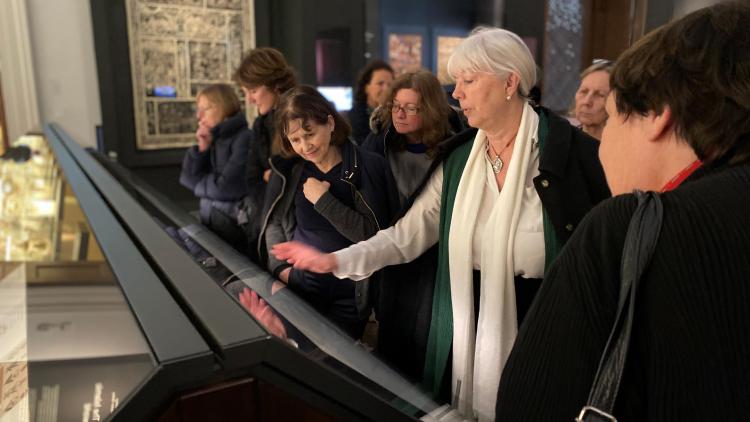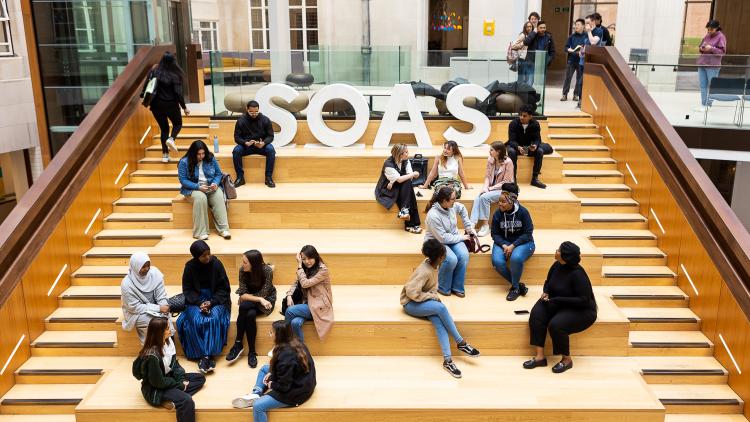Arabic (Colloquial Levantine) Beginners Course


Key information
- Duration
- 1 term per sub-level; 10 weeks per term
- Attendance mode
- Part-time, online/blended learning
Course overview
Levantine Arabic is the dialect of Arabic spoken in the Levant region of the Middle East (Syria, Lebanon, Palestine, and Jordan).
This course is designed for complete beginners of Levantine Arabic and will teach them to apply the language within a limited range of everyday situations using the four skills: listening, speaking, reading, and writing.
Students will learn to express themselves at a basic level of communicative interaction. They will also be introduced to the essentials of the Arabic writing system and learn to read and write basic words and sentences. This course is delivered by the Language Centre.
Method
The course is taught in English and Arabic and includes an appropriate exposure to Arabic grammar and vocabulary, while developing the skills of comprehension in listening and reading, and the skills of expression in speaking and writing. The course places a greater focus on speaking for communicative purposes.
This will be achieved through 20 hours of blended learning: this is composed of 15 hours of online structured lessons with the teacher. This is supplemented by a minimum of 5 hours of guided independent learning supported by complementary material. The course objective will be achieved within the 10-week course.
Material
Our course materials page shows you what you need to buy for this course.
Entry requirements and progression route
For this course, Levantine Beginners 1, no previous knowledge is required. To be able to join Levantine Beginners 2, you need to have completed the Levantine 1 course at SOAS Language Centre, or have an equivalent level of guided learning hours (a minimum of 15 hours).
The progression from Levantine Beginners 1 is to Levantine Beginners 2, and then to Levantine Beginners 3. Upon successful completion of Levantine Beginners 3, learners can progress to an Elementary level course in Arabic. Often at Beginners 1 and 2 level it is possible to transition from MSA to Levantine, or vice versa, as at this stage the difference is minimal.
Please note, that each term, courses are subject to quorum requirements.
For course dates and information, please see our timetables.
Structure
Arabic Levantine Beginners 1
In this course you will:
- recognise the Arabic alphabet and its transliteration
- be comfortable with the pronunciation of the Arabic letters
- read words and short familiar sentences
- understand the difference between feminine and masculine forms
- use common greetings
- introduce yourself and exchange pleasantries
- use adjectives to describe family members and places
- count numbers up to 99 and tell the time
- exchange simple information like nationality and interests
- make polite requests and order beverages
- talk about your daily activities
- ask basic questions about professions and social status
- compare uses of Levantine to Modern Standard Arabic
- use possessive and personal pronouns effectively
Arabic Levantine Beginners 2
In this course you will:
- give directions and use demonstrative pronouns
- describe roads, traffic lights, and locations
- describe and name places
- ask for price and pay for a service
- express ownership and possessions
- describe the classroom using prepositions
- count and use numbers up to 1000
- use ordinal numbers for ranking and positions
- describe facilities, furniture, and room items
- give simple orders and instructions
- express opinions using negation
- describe people using passive participle as adjectives
- use gender and number agreement between nouns and Arabic adjectives
Arabic Levantine Beginners 3
In this course you will:
- count items using all numbers
- express feelings and opinions
- use currencies when buying and selling
- select relevant vocabulary when shopping
- express agreement and disagreement
- compare things: colours, sizes and preference
- conjugate verbs in present tense using the correct prefixes
- use active participles for professions
- use passive participle as adjective
- practise the use of dual, regular and irregular plurals
- differentiate between comparative and superlative forms
- converse in a restaurant and order a meal
- use nominal and verbal sentences effectively
- differentiate between adverbs, adjectives, and nouns
The above is an indication of content that may be covered over the duration of the course but it could vary depending on the level and progress of students in the class
Contact us
Disclaimer
Important notice regarding changes to programmes and modules.
Related information
See the full list of Language Centre short courses in Arabic on the Arabic language homepage.
Image credit: Kao Rodriguez via Unsplash






